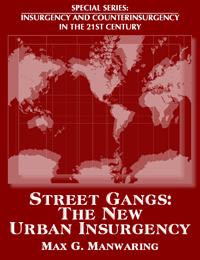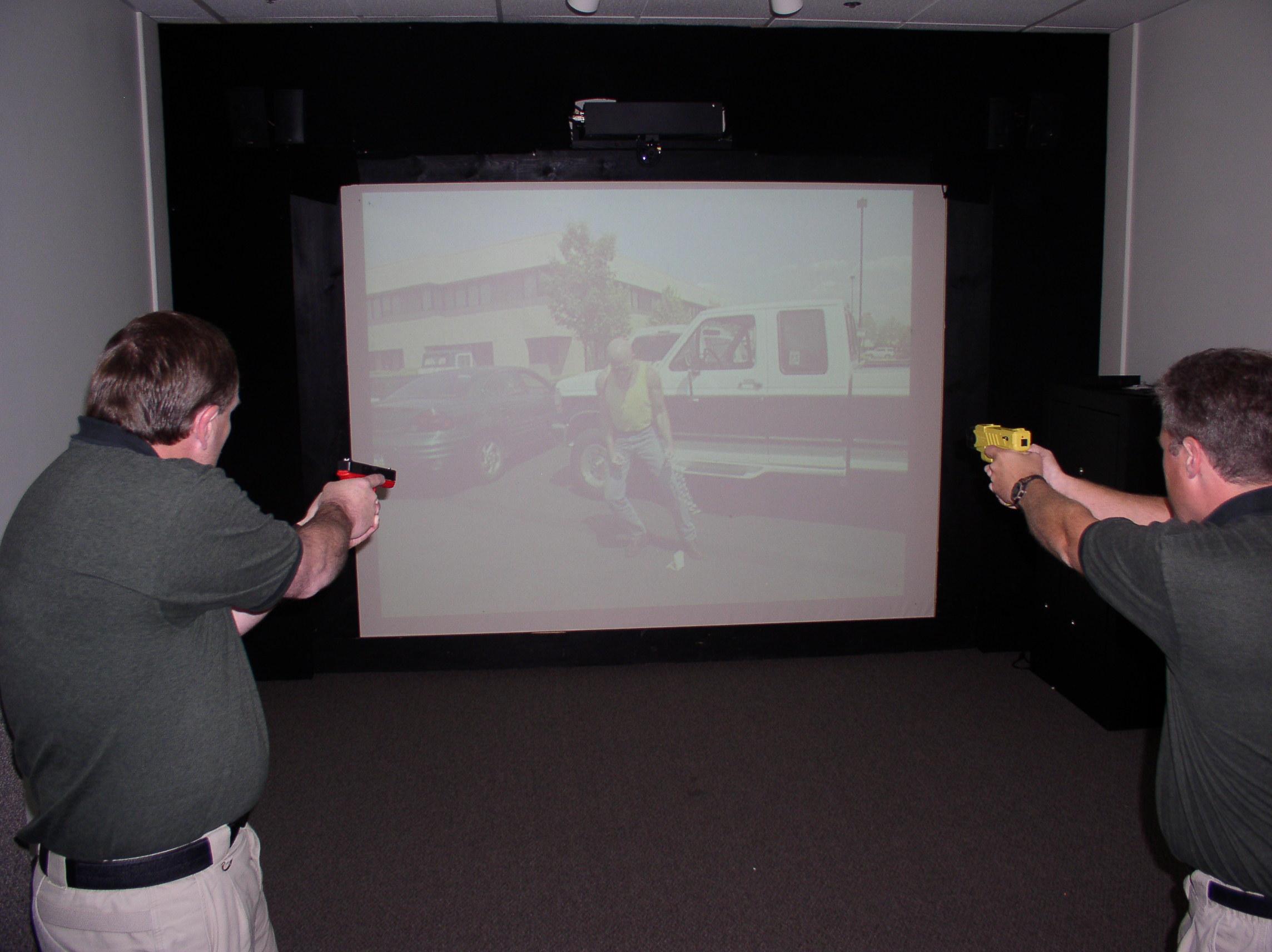Expanding the themes of Justice and Terror, Dr. James J.F.
Forest, Ph.D. leads off the June 2006 Newsletter. Dr.
Forest is an Associate Professor and Director of Terrorism
Studies at the United States Military Academy, West Point.
We welcome him to the newsletter and encourage you to
provide him with feedback on his article.
Corporal David Blosser returns with an updated article
on Practical Firearm Concepts. In between, you will find
cutting-edge information on criminal justice, law
enforcement, terrorism and technology.
|
Educating Future Army Officers in an Age of Global
Terrorism
|
|
By James J.F. Forest, Ph.D.

The success that the United States has had in the
war on terror, and that it will have in the future, is
due in part to the operational capabilities and
intellectual capacity of our professional military.
This article examines how West Point teaches future
military officers about terrorism and
counterterrorism. The views expressed are those of the
author and not of the Department of the Army, the U.S.
Military Academy, or any other agency of the U.S.
Government.
The synergy that results from the linkage of the
best operators in the world and the best intellectuals
in the world is truly awesome and is sorely need in
the fight against terrorism
|
|
Mass Fatality Incidents: A Guide for Human Forensic
Identification
|
From the National Institute for Justice

In a mass fatality incident, correct victim
identification is essential to satisfy humanitarian
considerations, meet civil and criminal investigative
needs, and identify victim perpetrators. This 96-page
Special Report provides medical examiners/coroners
with guidelines for preparing the portion of the
disaster plan concerned with victim identification and
summarizes the victim identification process for other
first responders. It discusses the integration of the
medical examiner/coroner into the initial response
process, and presents the roles of various forensic
disciplines (including forensic anthropology,
radiology, odontology, fingerprinting, and DNA
analysis) in victim identification.
This guide represents the experience of dozens of
Federal, State, international, and private forensic
experts who took part in the Technical Working Group
for Mass Fatality Forensic Identification.
|
|
America's Senior Warrior
|
|
Retired Reserve Doc Deploys Third Time

Most military members end their careers by the time
they are half his age, but one Army doctor says he
would rather come out of retirement again and again to
help the troops than watch from the sidelines.
Tomorrow, retired Army Reserve Col. William Bernhard,
a 75-year-old surgeon, will start a journey to
Afghanistan, his third deployment in the war on
terror.
"It's a great opportunity for me to serve the young
men and women who, as we all know, have medical and
surgical problems," said Bernhard. "We need trained,
experienced physicians to take care of them, and I
feel honored that I've been selected to go over there
and provide medical care for these troops."
|
|
Guidance on the Management, Recording and
Investigation of Missing Persons
|
|
|
Based on an article in our last newsletter feedback
was received from a colleague in the United Kingdom.
He made us aware that the UK Police National Missing
Persons Bureau (PNMPB) is the centre for the exchange
of information connected with the search for missing
persons both nationally and internationally. The
Bureau focuses on cross matching missing persons with
unidentified persons. On their website the center has
published a downloadable PDF version of Guidance on
the management, Recording and Investigation of Missing
Persons.
|
|
Street Gangs: The New Urban Insurgency
|

The primary thrust of this monograph is to explain
the linkage of contemporary criminal street gangs
(that is, the gang phenomenon or third generation
gangs) to insurgency in terms of the instability it
wreaks upon government and the concomitant challenge
to state sovereignty. Although there are differences
between gangs and insurgents regarding motives and
modes of operations, this linkage infers that gang
phenomena are mutated forms of urban insurgency.
In these terms, these "new" nonstate actors must
eventually seize political power in order to guarantee
the freedom of action and the commercial environment
they want. The common denominator that clearly links
the gang phenomenon to insurgency is that the third
generation gangs' and insurgents' ultimate objective
is to depose or control the governments of targeted
countries. As a consequence, the "Duck Analogy"
applies. Third generation gangs look like ducks, walk
like ducks, and act like ducksa peculiar breed, but
ducks nevertheless!
|
|
International Child Abduction
|
|
Using the Criminal Justice System
There are
many factors to consider in determining whether or not
to file criminal charges against the abductor. The
childs safe return is the primary objective in any
missing child case, and criminal charges may actually
complicate child recovery efforts. While the threat of
outstanding criminal charges may intimidate some
abductors into returning the child, others may react
by increasing their efforts to remain undetected.
|
|
License Plates of North America
|
|

This website is unique and a valuable investigative
tool. The author, a license plate collector, has
classified and scanned photographs of all North
American (United States, Canada and Mexico) license
plates. Moreover, he has classified them in a number
of easy-to-use databases. The next time you are
investigating a crime and a witness gives you a
partial plate, or describes a plate from another
state, you can use this website to further your
investigations
|
|
Urban Areas Security Initiative
|
|
|
T he FY 2006 DHS risk methodology represents
a major
step forward in the analysis of the risk of terrorism
faced by our Nations communities. Tremendous gains
have been made in both the quality and specificity of
information and analysis incorporated within the
model, yielding the most accurate estimation possible
of the relative risk of prospective grant candidates.
The methodology is designed to inform a policy
decision regarding the allocation and investment of
Federal grant funding, and should not be confused with
an estimate of absolute risk faced by candidate areas
|
|
New Identity Theft Kit Available
|
|
Educate your community

Each year, millions of Americans have their
identity stolen. The Federal Trade Commission, the
nation's consumer protection agency, wants you to have
the information you need to protect yourself against
identity theft. While there are no guarantees about
avoiding identity theft, its important for you to:
- DETER identity thieves by safeguarding your
information.
- DETECT suspicious activity by routinely
monitoring your financial accounts and billing
statements.
- DEFEND against ID theft as soon as you suspect a
problem.
The link below includes everything you need to
educate your community about how to deter, detect, and
defend against identity theft. These materials are all
contained in the FTCs ID Theft Consumer Education Kit
and are available in English and Spanish
|
|
Forensic Examination of Digital Evidence: A Guide
for Law Enforcement
|
National Institute for Justice Release

This guide is intended for use by members of the
law enforcement community who are responsible for the
examination of digital evidence. The guide, published
as an NIJ Special Report, is the second in a series of
guides on investigating electronic crime. It deals
with common situations encountered during the
processing and handling of digital evidence and can be
used to help agencies develop their own policies and
procedures..
|
|
Practical Firearm Concepts
|
By Corporal David Blosser, Kennewick Police Department

The Practical Competitive Shooting world uses some
terms and concepts that we rarely if ever, hear from
Police Trainers. When I attended my first practical
shooting match, I assumed that my police-trained
firearm skills were far superior then any local
civilians. At that match, I watched with amazement at
how fast and accurate a gun can actually be used. I
left that match disappointed that I had not seen or
been taught that type of shooting as a Police Officer.
We, as Police Officers, can utilize the concepts of
competitive shooting, and apply them tactically to our
own training.
|
|
